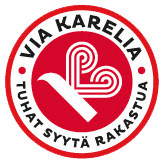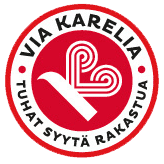Battles in Suomussalmi 30 November 1939 – 7 January 1940
The Soviet 163rd division launched an offensive to Suomussalmi in the morning of 30 November using two roads: in north-east from Juntusranta and from the Raate road in south-east. The focus at this point was in the direction of Juntusranta. The strength of the attacking troops was 17,500 men.
When the offensive began, the Finns had only one separate battalion (ErP 15) near Suomussalmi. Majority of the battalion was in Suomussalmi. Juntusranta had only a platoon of border guards, and there was a company of border guards in the Raate road.
In the direction of the Raate road, the Finns held their defence in Purasjoki, which had been rearmed to some extent in advance, but they had to retreat to Haukiperä, near Ämmänsaari on 7 December.
In the Juntusranta direction, the Finnish troops fell back via Palovaara and Kuurtola to the Suomussalmi church village, which the Finns burnt down on 6 December, the Independence Day. 8.12. The troops took a defensive position at Niskanselkä, on the south-western side of lake Kiantajärvi.
The gravity of the situation was soon realised, and the Commander-in-Chief transferred one infantry regiment to Suomussalmi. The transferred regiment and the troops already in Suomussalmi became a brigade, and colonel Hjalmar Siilasvuo was named as its commander. His task was to beat the enemy that had advanced to Suomussalmi.
The Siilasvuo troops attacked on 11 December 1939. Partially surrounded, these troops bound the entire 163rd division to battles in the church village and it's environment. At the same time, Siilasvuo received intelligence about a new, large group approaching from the direction of the Raate road. Siilasvuo decided to settle the battle in the village before the new enemy division had a chance to intervene.
Battles raged in Suomussalmi for over two weeks. In the morning of 28 December 1939, the Finns saw long lines of Russians retreating from the village and Hulkonniemi. By noon, the Finns had occupied the village, and on the next day, the last Russian nests were broken, and the division fell back to Juntusranta, where the front line stayed for the remainder of the war. The Soviet 163rd division had been rendered unable to fight, and its equipment was left to Finns.
The 44th division of the Red Army, approaching from the direction of the Raate road, had grouped in a defensive position on the road. While preparing for the "motti" battles of the Raate road, the Finns built a temporary road, fit for trucks, taking advance of the body of water south from the location. This made it possible to launch an offensive to the flank of the Ukrainian division that had halted at the Raate road.
The four units of colonel Siilasvuo's division attacked from the south to Haukila Tyynelä, Likoharju and Raate on the Raate road. On the decisive days, 4-7 January 1940, the division was disbanded and destroyed on the Raate road. A small group made their escape from the siege.
The battles in Suomussalmi ended on 7 January 1940. The majority of Siilasvuo's troops were transferred to Kuhmo, where they fought for the remainder of the war.
Memorials of the Suomussalmi battles
There are 12 memorials and other sites in Suomussalmi, where you can explore the local military history.
Four of the memorials are in the Suomussalmi village or nearby, two in Juntusranta, the rest on the Raate road.
The Main Memorial, Karhulanvaara
The main memorial of the Suomussalmi battles is in Karhulanvaara, near the Suomussalmi village, at the junction of Via Karelia ja the Suomussalmi-Ala-Vuotela road (9150). There's a large parking area by the memorial.
The memorial was designed by architect Alvar Aalto, and it was unveiled on 30 August 1958. The statue was made by sculptor Heikki Häiväoja. A metal plaque on the base of the statue illustrates the Suomussalmi battles, and the end of the base has the words of general Hjalmar Siilasvuo: ”Many brave soldiers redeemed the great victories in Suomussalmi with their blood. They showed their people the way of honour, which was heavy, but the only one”.
The only building standing in the village after the war
A the centre of the village, there's a plaque on the wall of the single shed that was saved from the destruction of the war. The plaque reads: ”On 6-27 December 1939, violent battles were raging in Suomussalmi. The only building saved was this building, battered by shells”. The shed is by the church tower of the main church, by the pedestrian road on Salmentie. You can park by the church.
Memorial stone of the Haukiperä battles
The plaque reads: ”This is where the enemy was halted on 9 December 1939.” The stone was unveiled on 30 May 1959. The memorial is near the junction of the Suomussalmi – Kajaani road (915) and the Ämmänsaari – Kuhmo road (913). There's a rest area by the road with signs leading to the memorial stone.
Kylämäki memorial
The memorial is on the spot where the enemy's route for withdrawal was cut on the last day of year 1939. The stone, brought in from Satakunta, was erected by the men of the 6th Bicycle Battalion (PPP6) in 1958. The memorial stone is by the road (915) that leads to Suomussalmi from main road 5, on its west side, about 4.5km:n from the main road junction. The stone, brought in from Satakunta, was erected by the 6th Bicycle Battalion.
Kuivasjärvi memorial
Memorial stone of the Kuivasjärvi – Kuomasjärvi battle line, for the fallen soldiers from Mänttä. The stone reads: ”Brothers in Arms Sulo Aalto 26.12.39 and Erkki Huttunen 4.1.40 from Mänttä”. The stone was erected in 1965. The memorial is on Via Karelia (912), about 10.5km south from Suomussalmi.
Raatteen Portti, Winter War Museum
The museum is at the junction of Via Karelia and the Raate road (9125). See War Museums.
Likoharju memorial
The memorial was unveiled to commemorate the battles of the Purasjoki line on 11 August 1963. ”This memorial was erected for the memory of the honourable battles fought in the Raate road in 1939-40. Korpisoturiveljet - Brothers in Arms”. The memorial is on the south side of the Raate road (9125), about 8km east from Via Karelia.
Partially restored Purasjoki battle station
A part of the Purasjoki battle station, located about 1km east of the Likoharju, was restored in collaboration between the Finnish Heritage Agency (lieutenant colonel Pertti Huttunen as their expert consultant) and the municipality of Suomussalmi. There's a part of a trench, machine gun nests, tank and infantry obstacles, and an unfinished dugout.
At first, Purasjoki was fortified by the reservists and labourers of the Suomussalmi Training Centre – 500 men altogether – in 21 days in October and November of 1939. The second fortified company of the 15th separate battalion fought successfully here for three days, when the Winter War began.
Original trenches, tank obstacles etc. can still be found in other battle grounds of the Raate road. Some of them have been restored.
On the Raate road, there are two memorials for the Soviet soldiers.
The older of them is about 1 kilometre east of Raatteen Portti.
The memorial was sculpted by Oleg Komov. It is a statue of a grieving woman. ”For the sons of the Fatherland – grieving Russia”. The unveiling ceremony was on 19 September 1994. It was attended by the Russian ambassador Yuri Deryabin.
The second memorial for Soviet soldiers, currently Ukrainian, is on Via Karelia, about 2km south of Raatteen Portti near the Haukila house, at the former location of the 44th division command dugout. The Finnish troops destroyed the Ukrainian 44th Division on the Raate road. The memorial was unveiled by the Ukrainian ambassador Ihor Podoliev.
The Raate Frontier Guard Museum
In the east end of the Raate Road, there's the Raate Frontier Guard Museum. See military history museums
Juntusranta memorial
The memorial says: ”The first shots of the Winter War were shot here on 30 November 1939. Korpisoturiveljet - Brothers in Arms”. The memorial was unveiled in 1963. The memorial is in Ruhtinansalmi near the Karttimo frontier guard on the Lehtovaarantie road (9131), about 5km from the Suomussalmi – Juntusranta road (843).
Guarding post memorial
There's another memorial by the Lehtovaarantie road. ”During the extra training, this was a guarding post of the 2nd frontier detachment, where young Matti Härkönen from Ristijärvi was accidentally left, when the Winter War broke on 30 November 1939”.
The same memorial shows the route of Lempi, the wife of a nearby house, when she fled to Juntusranta with her three small children, when she noticed the approaching Russians. She let the people of Juntusranta know the Winter War had broke. The memorial was erected by Kainuu Border Guard Guild, Suomussalmi detachment in 1999.



